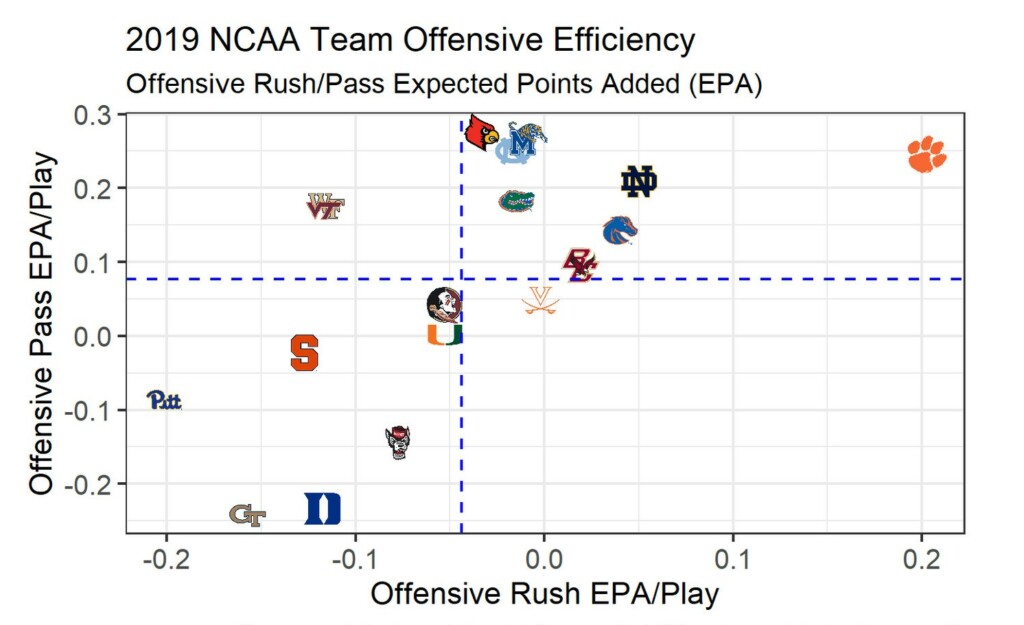Analytics in College Football
Did you guys like Moneyball? Well, if you haven’t seen it, the takeaway today is that underlying statistics (analytics) have become mainstream in the sports industry. And college football is no exception.
Coaches are often turning toward analytics to make decisions for them. Should I punt, or go for it on fourth down? Do I call a timeout now, or after this series? Should I recruit player X or Player Z?
With this in mind, we want to inform and educate Signing Day Sports users on this topic. The Wire will discuss how analytics have affected the sport as well as how recruits can use it to their advantage.
Analytics in College Football
As mentioned, analytics have already broken into college football. Coaches are thinking more and more analytically as time goes on, in a variety of ways.
For example, college coaches use analytics to improve their decisions in game-time situations. Play-calling, field goal vs. “go-for-it” situations, and time management are becoming increasingly dependent on these statistics.
College coaches use analytical data to gain a competitive edge on the field. This is done in congruence with analyzing film, and when done right, can yield information that coaches act on throughout their season. Analyzing these data points are helpful in showing opponents’ strengths and weaknesses. And the same can be said about their own team.

Sportsdataverse.org
One of the more popular tools being utilized is “expected points added (EPA).” This helps college coaches understand how a specific play, decision, or series of plays or decisions can impact the outcome of a game – and more specifically, the score. From there, they make decisions accordingly, although it seems like they’re already made for them, huh?
Analytics, as a topic, is much deeper than the surface level understanding offered by The Wire. However, as analytics become more and more prevalent in today’s game, it’s important for high school student-athletes to stay generally informed and use this data to their advantage in the recruiting process.
Analytics in Recruiting
College coaches can easily use data available to them as a way to evaluate the performance of high school student-athletes, which then factors into their recruiting decisions. In short, college coaches use analytical data to identify potential recruits who might be a good fit for their program.
With automated statistic-gathering applications, the sheer amount of data is overwhelming. College football programs are able to employ analysts who can make sense of these numbers, and its usage goes all the way down to the program’s recruiting pipeline.
Who is making more contested catches? Who is catching passes that they weren’t expected to catch at a higher rate? Is a deep threat going to add more EPA, or a possession receiver?
While these questions are specific to wide receivers, and quite broad in nature, these types of questions apply to all different positions. These questions don’t need to be answered by coaches or recruiters anymore. The guessing game is out of the picture, and the likelihood of human error occurring in recruiting is fleeting. So, no more lucky breaks!
With this said, it’s that much more important for anyone with an interest in playing college football to make sure that they are contributing positively every down, every game, and every day.
Ask your coaches how you can make a bigger impact. Figure out if anything you’re doing is hurting your team. Learn about your own strengths and weaknesses so that you can eliminate them from your game.
In any way possible, find a way to cement your positive impact on your team. In turn, this will lead to recruiting attention and long-term success.
How to Exemplify Positive Analytics
For starters, consider an application like Signing Day Sports. The same way that analytics are meant to take the guessing game out of coaching decisions, Signing Day Sports is meant to take the guessing game out of recruiting.
While the information provided to college coaches through a platform like Signing Day Sports is not as complex as what they get from their in-house analytics department, it is still enough to exemplify your ability as an athlete.
Showing your height, weight, and other measurables such as your wingspan or 40-yard dash is important to college coaches. And to put it in a public place that is available to them is taking the step to be proactive and show that you are serious about being recruited and earning your spot.
In addition to Signing Day Sports, high school athletes should start getting informed. Understand the terms and jargon used on and off the football field. The more you understand about analytics, the better. More importantly, the more you understand, the more likely you are to improve upon the things that coaches look for.
Learning about analytics, and its effect on college football goes a long way for you, your team, and your recruiting journey. And who doesn’t like learning about the game?